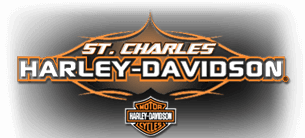Tips for Riding a Trike

Trikes are fun to ride, and although not popular like the two-wheeled motorcycle, they offer many advantages, including speed, power, comfort, and easy handling, as expected from Harley-Davidson® motorcycles. Furthermore, trikes are known for their stability and versatility, attracting many enthusiasts and veteran bikers who have switched from the traditional two-wheel motorcycles. Driving a three-wheel motorcycle is different from the conventional bike, and in most states, it's mandatory to have driving certifications before getting on the road. If you need a refresher or are new to owning one of these, follow the below tips from St. Charles Harley-Davidson on how to ride a trike. Also, we invite you to visit our location in St. Charles, Missouri, serving St. Louis and St. Peters, Missouri.
Cornering on a Trike
Typically, all motorcycles are steered through two main techniques. One is the counter steering in conventional bikes, requiring the rider to lean to counter the centrifugal forces, turning effectively and preventing them from tipping over. The second is direct steering, used when riding the trikes and doesn’t involve leaning.
Direct steering makes riding the trikes straightforward and is easier on the knees and legs. Trikes steer similarly to cars; however, in this case, you’ll have to tilt the handlebars in the directions you’re heading.
To turn, firstly, slow down the trike as you’re nearing the turn, maintaining your speed. Avoid hitting the throttle until you’re through with the turn. Also, try to achieve a smooth turn; otherwise, your trike could lose control.
Bear in mind the width of your trike, and consider the size of the wheels when turning. Turning a trike is done at different angles compared to the two-wheeled bikes to avoid sharp corners, which would result in one of the wheels coming off the ground.
How to Start and Shift
Trikes use manual transmission similar to two-wheel bikes. Begin by engaging the brakes, then the clutch, shift into first gear, and release the brakes, followed by the clutch while pushing the throttle.
When shifting gears, drop the throttle, engage the clutch, shift and release the clutch. The process is similar to gear transmission in a manual car. You must shift correctly to avoid jerking and stalling the engine or losing control.
How to Stop
When coming to the end of the road or a stop sign, you’ll need to know how to stop your trike. Since these are large and heavy, considerable distance and time are required to come to a stop. Slowly engage the brakes from far and avoid instant braking since it can lock up the wheels. If your trike has both front and rear brakes, use them. If you have to choose, use the rear brakes.
We hope the above tips will be helpful to you the next time you’re on a trike. To learn more, contact St. Charles Harley-Davidson today and visit our location in St. Charles, Missouri, serving St. Louis and St. Peters, Missouri.
